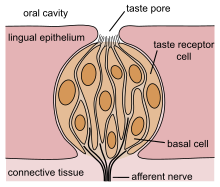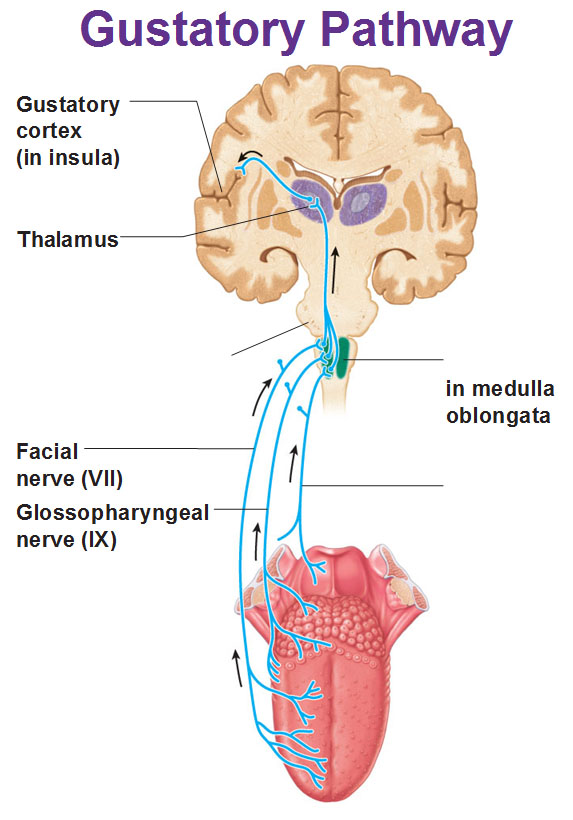Taste
Taste is the sensory modality that guides organisms to identify and consume nutrients while avoiding toxins and indigestible materials. For humans, this means recognizing and distinguishing sweet, umami, sour, salty, and bitter-the so-called "basic" tastes (Fig. 1). There are likely additional qualities such as fatty, metallic, and others that might also be considered basic tastes. Each of these is believed to represent different nutritional or physiological requirements or pose potential dietary hazards. Taste is commonly confused with flavor, the combined sensory experience of olfaction and gustation. Gustatory signals originate in sensory end organs in the oral cavity-taste buds.
Taste, gustatory perception, or gustation is one of the five traditional senses that belongs to the gustatory system.
Taste is the sensation produced when a substance in the mouth reacts chemically with taste receptor cells located on taste buds in the oral cavity, mostly on the tongue. Taste, along with smell (olfaction) and trigeminal nerve stimulation (registering texture, pain, and temperature), determines flavors of food or other substances. Humans have taste receptors on taste buds (gustatory calyculi) and other areas including the upper surface of the tongue and the epiglottis The gustatory cortex is responsible for the perception of taste.




